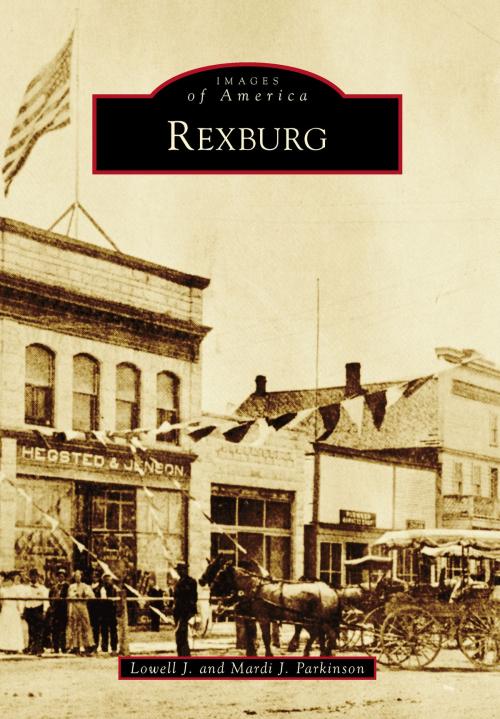| Author: | Lowell J. Parkinson, Mardi J. Parkinson | ISBN: | 9781439647646 |
| Publisher: | Arcadia Publishing Inc. | Publication: | October 6, 2014 |
| Imprint: | Arcadia Publishing | Language: | English |
| Author: | Lowell J. Parkinson, Mardi J. Parkinson |
| ISBN: | 9781439647646 |
| Publisher: | Arcadia Publishing Inc. |
| Publication: | October 6, 2014 |
| Imprint: | Arcadia Publishing |
| Language: | English |
The mountainous terrain and abundance of rivers near what would later become the city of Rexburg were a magnet for the Missouri Fur Company; in 1810, Maj. Andrew Henry, a representative for the company, built a trading post seven miles north of Rexburg. On March 10, 1883, Thomas E. Ricks, who was accompanied by 10 men, settled an area located east of the three buttes across the Snake River. Rexburg�s early days reflected the typical lifestyle of many northwestern towns in the late 19th century: saloons dotted Main Street, cowboys got into shooting matches in town, and farmers struggled to conquer mother earth while pioneer families endured the cold harsh winters. The combination of tall sagebrush and volcanic ash proved to be an ideal agricultural combination for producing wheat, barley, and potatoes. Education was important, and a college was established in the early years, starting in 1888.
The mountainous terrain and abundance of rivers near what would later become the city of Rexburg were a magnet for the Missouri Fur Company; in 1810, Maj. Andrew Henry, a representative for the company, built a trading post seven miles north of Rexburg. On March 10, 1883, Thomas E. Ricks, who was accompanied by 10 men, settled an area located east of the three buttes across the Snake River. Rexburg�s early days reflected the typical lifestyle of many northwestern towns in the late 19th century: saloons dotted Main Street, cowboys got into shooting matches in town, and farmers struggled to conquer mother earth while pioneer families endured the cold harsh winters. The combination of tall sagebrush and volcanic ash proved to be an ideal agricultural combination for producing wheat, barley, and potatoes. Education was important, and a college was established in the early years, starting in 1888.















